What is wood grain aluminum?
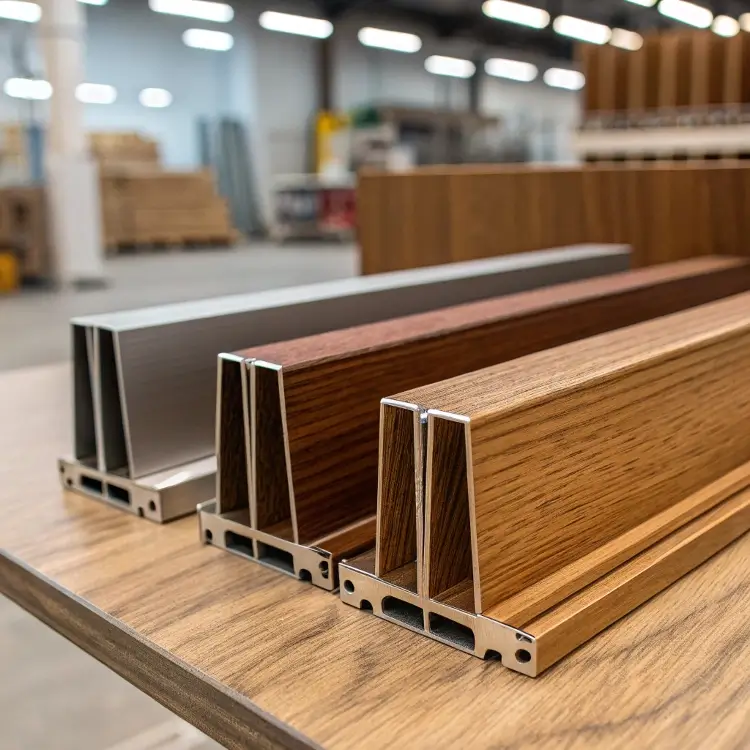
When customers want the warmth of wood but need the durability of metal, wood grain aluminum is the perfect answer. It solves the conflict between design aesthetics and practical performance.
Wood grain aluminum, also called aluminum wood, is an aluminium profile finished with a heat transfer film to imitate the natural texture and appearance of wood.
This finish offers the beauty of wood without the common problems like rotting, warping, or pest infestation. If you’re in construction or architecture, it’s a way to add elegance without sacrificing lifespan.
What is aluminum wood?
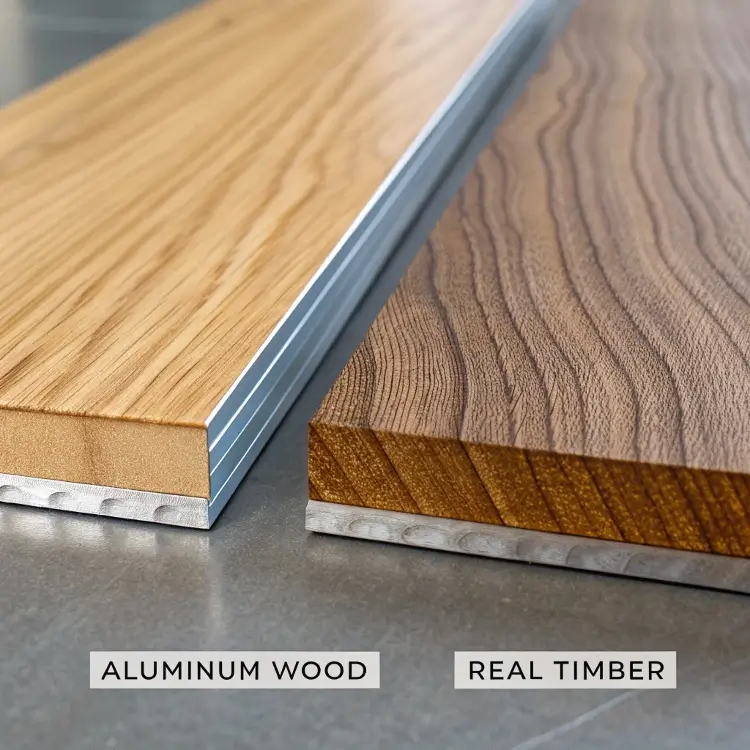
Some people call it wood grain aluminum. Others call it aluminum wood. They both mean the same thing. It’s aluminium that looks and feels like natural wood.
Aluminum wood is aluminium that has a decorative wood grain finish1 applied through heat transfer printing, giving it a wood-like appearance.
The result is a metal product that mimics
visually but performs like aluminium—resistant to rust, fire, termites, and UV fading.
Why Use Aluminum Wood?
Architects and builders choose aluminum wood for outdoor ceilings, louvers, window frames, and facades. It gives a high-end look while lasting much longer than wood in harsh environments.
| Feature | Aluminum Wood | Natural Wood |
|---|---|---|
| Appearance | Looks like real wood | Authentic |
| Durability | Very high | Moderate |
| Maintenance | Low | High |
| Fire Resistance | Excellent | Poor |
| Insect Resistance | Excellent | Poor |
It’s also available in dozens of patterns like teak, oak, walnut, and cherry, and in different gloss levels—matte, satin, or semi-gloss.
What are the different types of aluminium profiles?
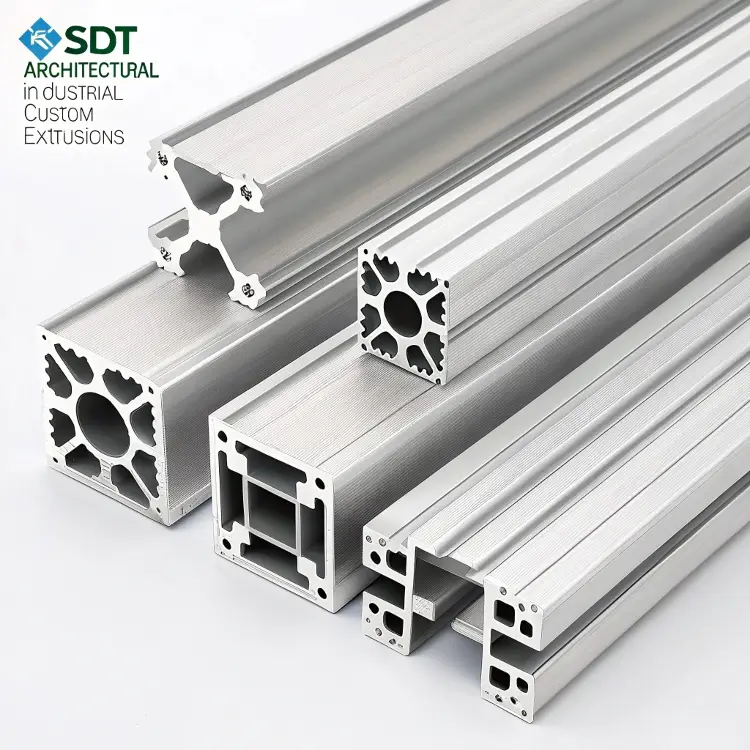
Choosing the right aluminium profile type can be overwhelming for buyers. There are dozens of shapes, alloys, and applications. Many customers have told me they initially picked the wrong profile for their needs.
Aluminium profiles are categorized by shape, application, and processing method—such as T-slot, architectural, industrial, or customized extrusions.
Each type serves a unique function, and the wrong choice can impact your entire project.
Common Aluminium Profile Types
| Profile Type | Use Case | Features |
|---|---|---|
| T-slot | Machinery frames | Modular, easy to assemble |
| Architectural | Windows, doors, curtain walls | Aesthetic finishes, precise cuts |
| Solar panel frames | PV mounting systems | Anti-corrosion, lightweight |
| Heat sinks | Electronics | High thermal conductivity |
| Custom profiles | OEM & project-specific needs | Tailored to application |
Matching Type to Function
When a customer tells me they need profiles for a cleanroom or CNC equipment, I usually suggest industrial-grade, anodized aluminum. But if they’re working on commercial buildings, I guide them toward architectural profiles2 with powder coating or wood grain finishes.
I always advise clients to ask these questions:
- What load will the profile bear?
- Is aesthetics a priority?
- Will the profile be exposed to sun or moisture?
- What’s the fabrication requirement (bending, welding)?
Choosing the right type ensures safety, durability, and visual appeal.
How to make aluminum look like wood?
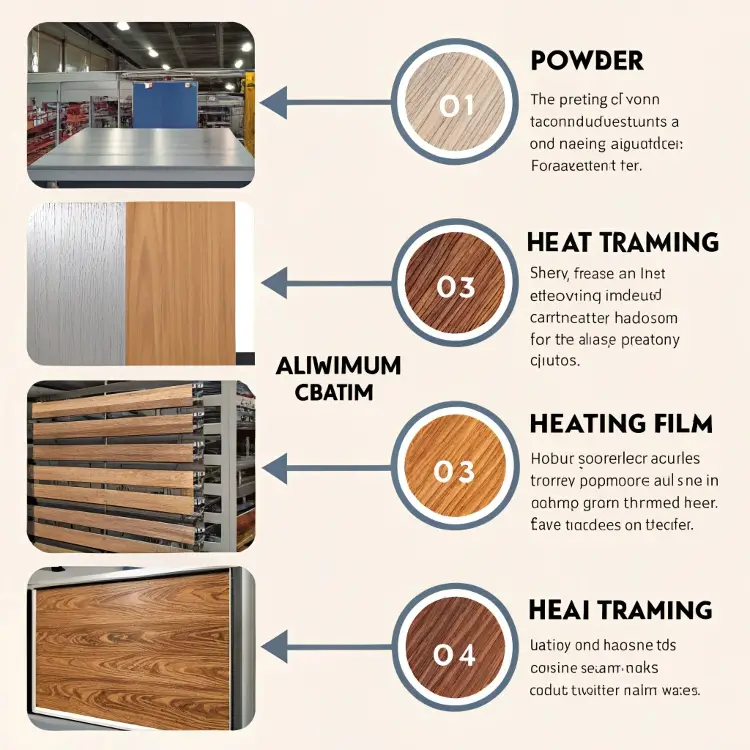
Some clients love aluminium for its durability but want the look of hardwood for luxury appeal. That’s where finishing methods become important.
You can make aluminum look like wood by applying a wood grain finish using sublimation transfer3 on a powder-coated surface4.
This process is precise, efficient, and eco-friendly compared to traditional wood treatments.
The Finishing Process
Here’s a simple breakdown of the process I use in our factory:
- Surface preparation: Clean and coat the aluminum with a base powder (often beige or brown).
- Wrap with film: Apply a heat-transfer film printed with a wood pattern.
- Vacuum and bake: Remove air bubbles and bake the piece at around 180°C.
- Peel off film: After curing, remove the film to reveal the wood texture.
Finish Options
| Wood Pattern | Common Uses |
|---|---|
| Walnut | Furniture, trims |
| Oak | Windows, doors |
| Teak | Outdoor structures |
| Cherry | Decorative panels |
This method provides a highly realistic texture that even feels slightly grainy to the touch. It’s also resistant to fading and UV degradation, making it a perfect choice for outdoor use.
What is the best aluminium profile?
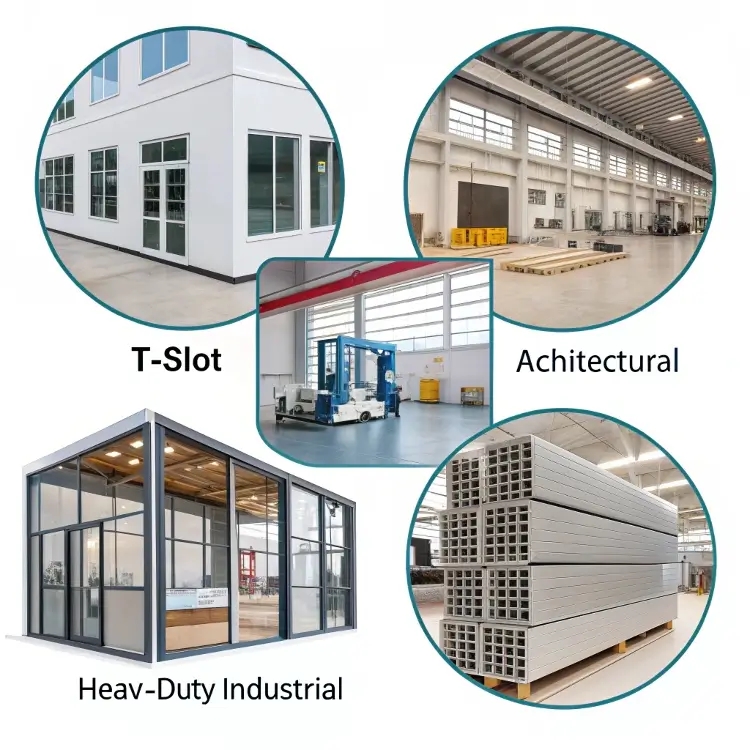
There’s no “one-size-fits-all” when it comes to aluminium profiles. Still, I often get asked: “Which is the best one?” The answer depends entirely on your project needs.
The best aluminium profile is the one that matches your application, meets mechanical and aesthetic requirements, and fits your budget.
I always tell clients: best doesn’t mean the strongest or most expensive. It means “the most suitable.”
Factors to Consider
Here’s how I help my clients choose:
1. Alloy Type
- 6063-T5: Best for architectural profiles—smooth surface, great for anodizing.
- 6061-T6: Best for strength and machining—ideal for structural parts.
2. Surface Finish
Choose from anodizing, powder coating, wood grain, sandblasting, or polishing. This changes appearance, corrosion resistance, and tactile feel.
3. Tolerance and Precision
High-precision profiles are essential for machinery or assembly line use. I usually offer CNC-milled or laser-cut options for tight tolerances.
4. Customization
For clients who need branding or specific dimensions, custom extrusion tooling is worth the investment.
Sample Use Case: Solar Panel Frames
For a client in North America, we supplied 6063-T5 aluminium profiles with matte black anodizing. The tolerance was ±0.15mm, and the product went through three-stage QC. The result: zero complaints across 3 years.
| Attribute | Best Practice |
|---|---|
| Alloy | 6063-T5 / 6061-T6 |
| Finish | Custom depending on use |
| Precision | CNC if needed |
| MOQ | 200kg |
| Lead time | 7–15 days |
If you’re unsure which profile is best, contact us directly with your application details. We’ll help you decide based on real needs—not marketing claims.
Conclusion
Wood grain aluminum, or aluminum wood, is ideal for combining the elegance of wood with the performance of metal. Choosing the right aluminium profile depends on your design, function, and budget.
-
Learn about the process and advantages of decorative wood grain finishes in enhancing aluminum products. ↩
-
Learn how architectural profiles enhance aesthetics and functionality in construction projects. ↩
-
Learn about sublimation transfer to see how it can transform aluminum surfaces, making them look like wood with precision. ↩
-
Discover the advantages of powder-coated surfaces in aluminum finishing, ensuring durability and aesthetic appeal. ↩



